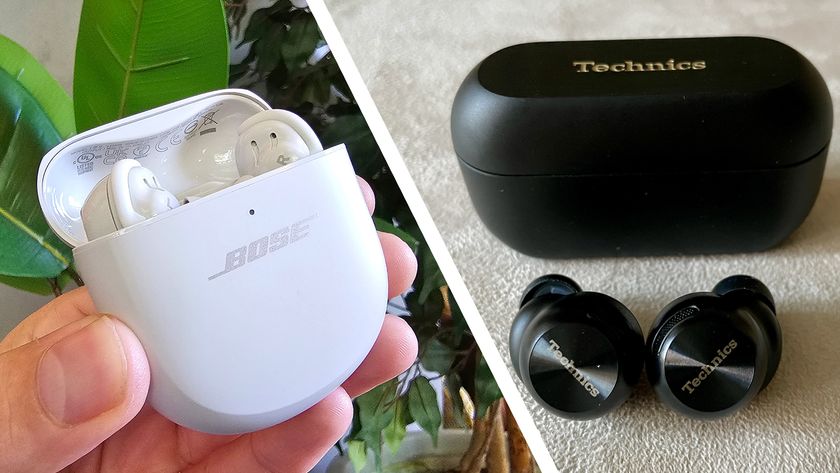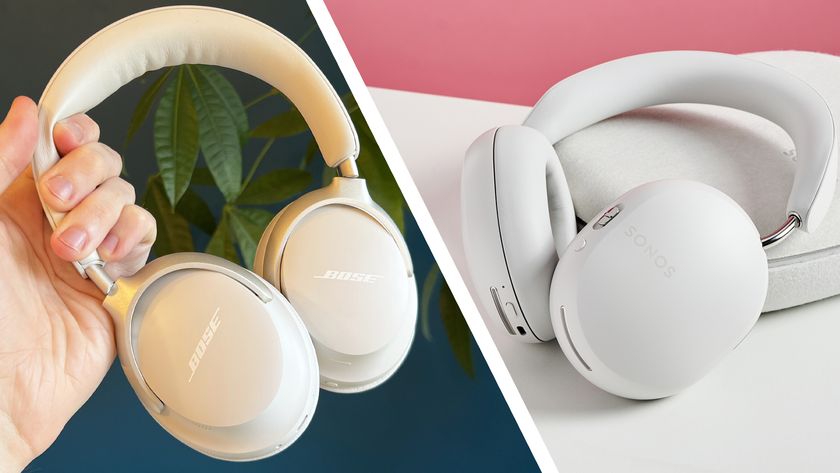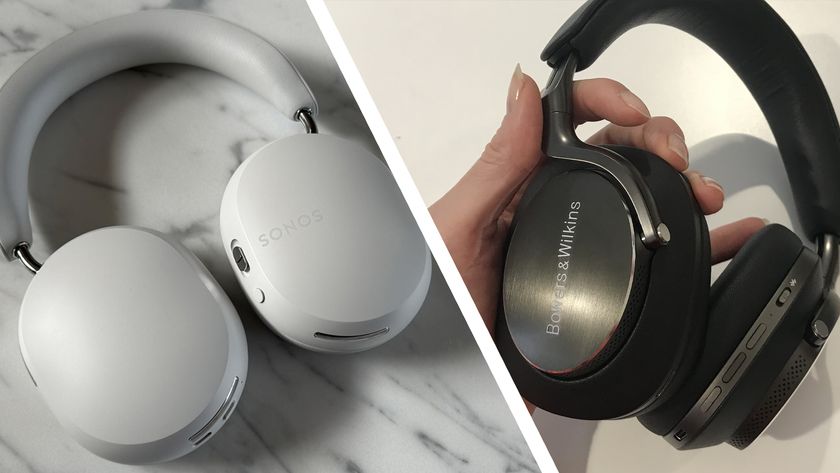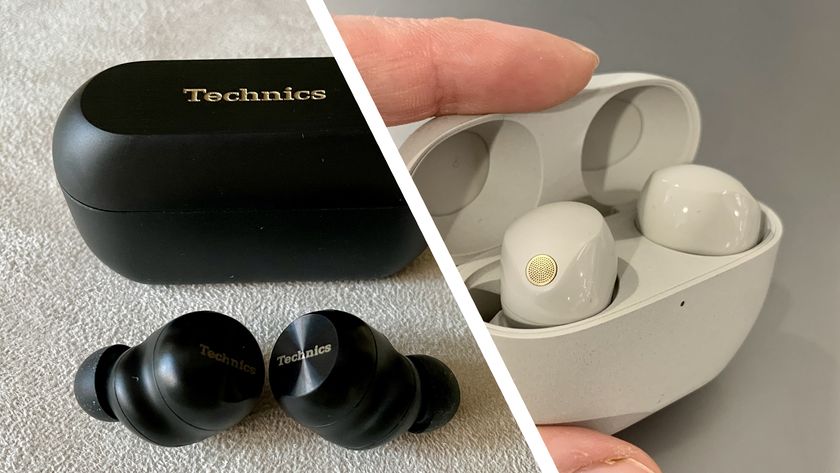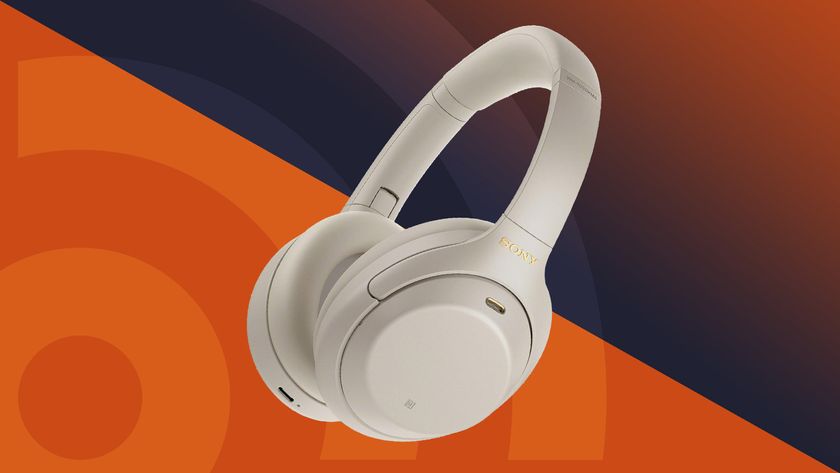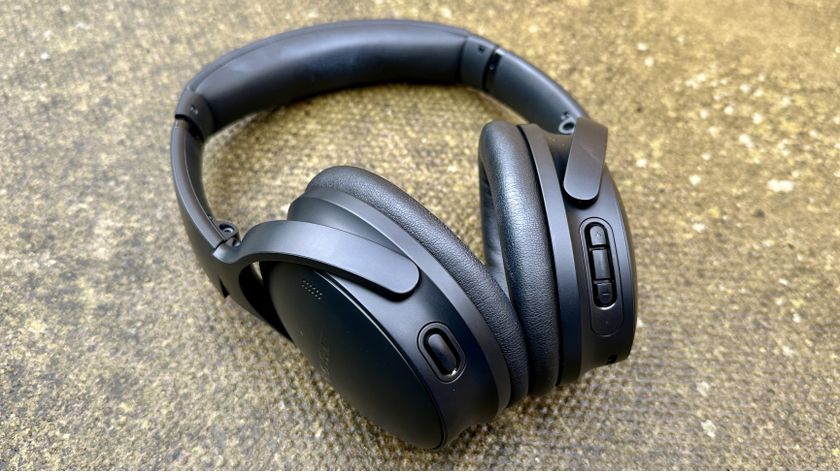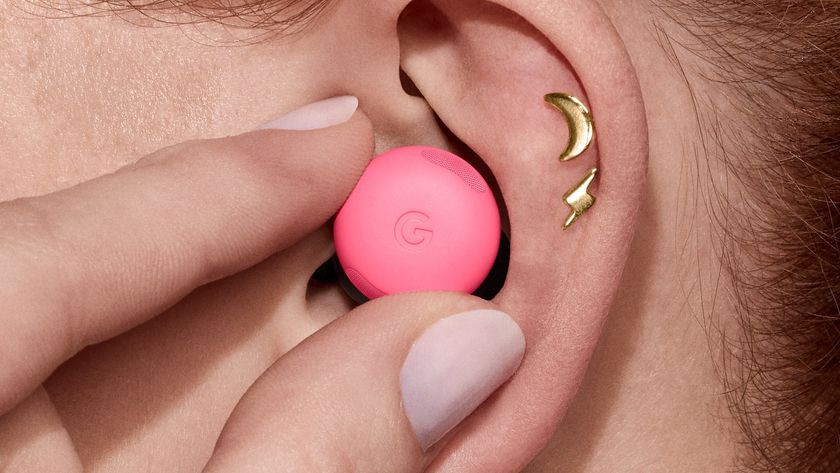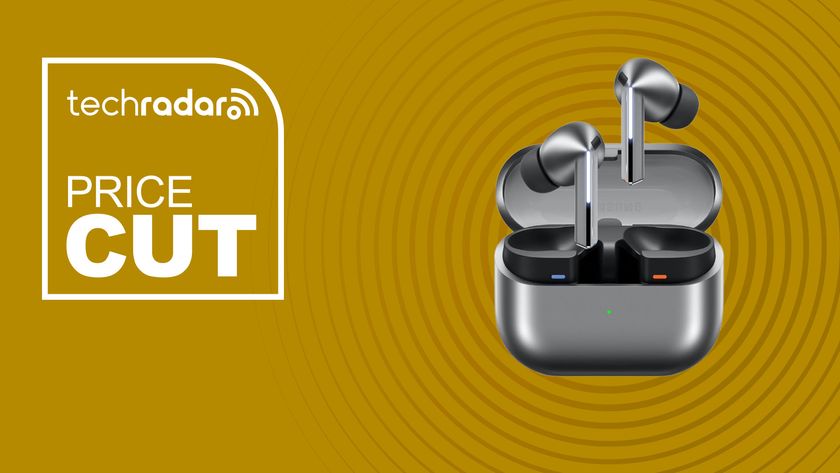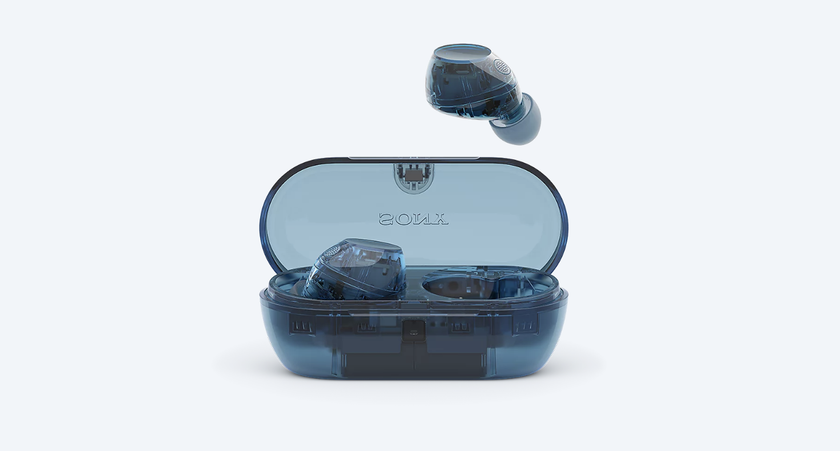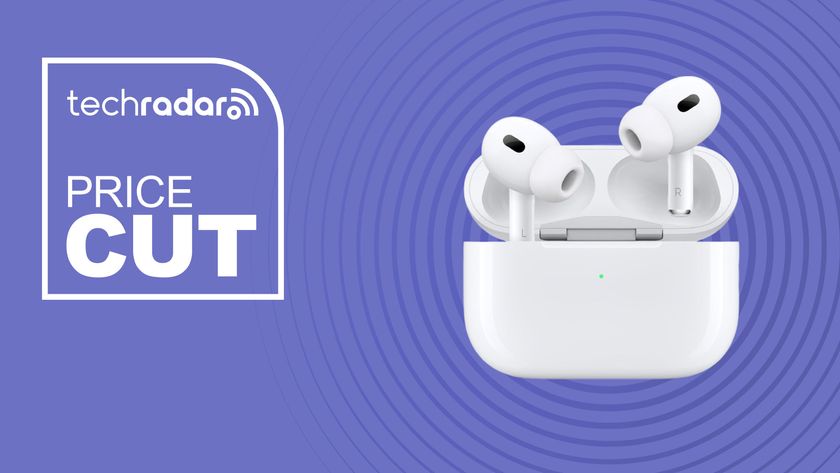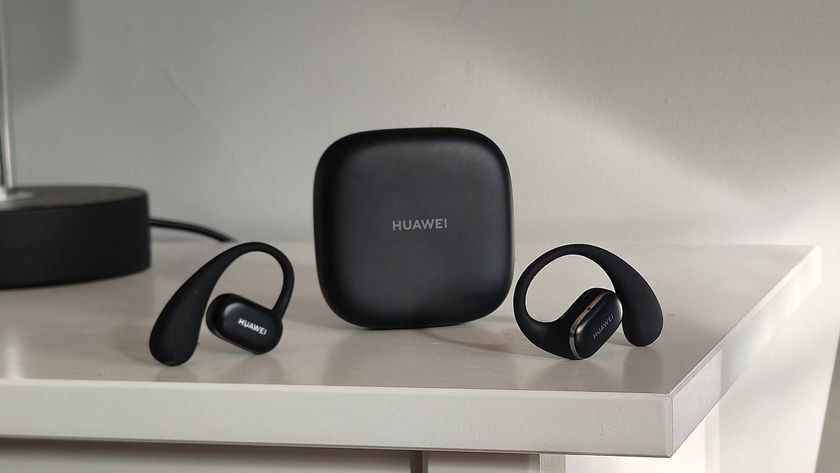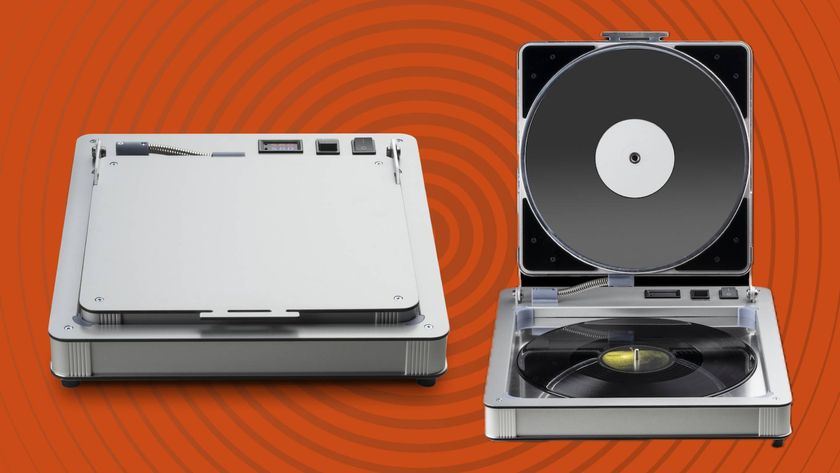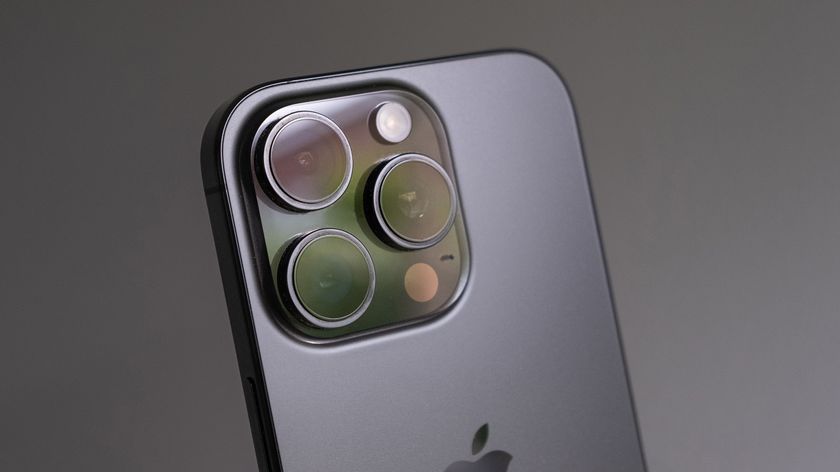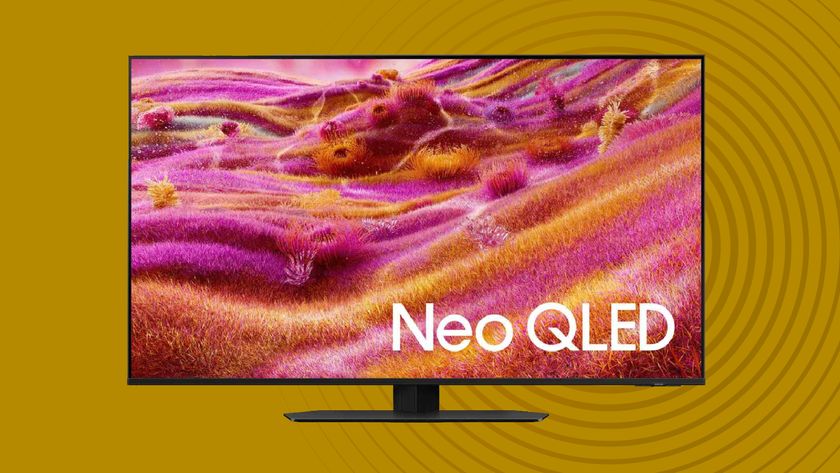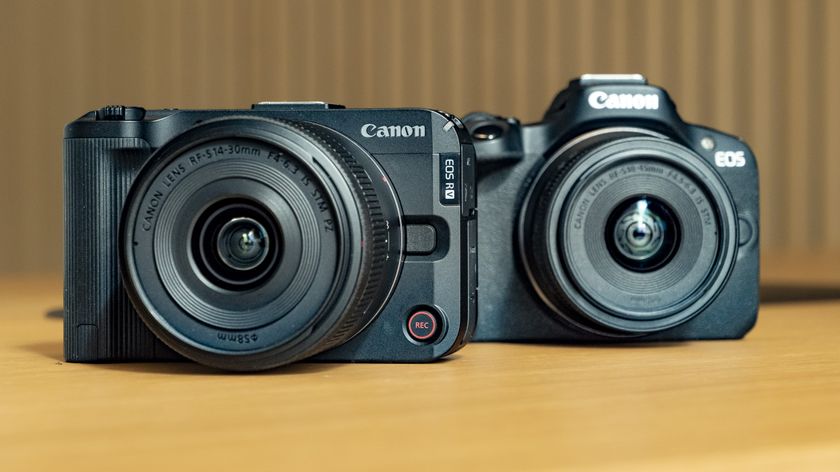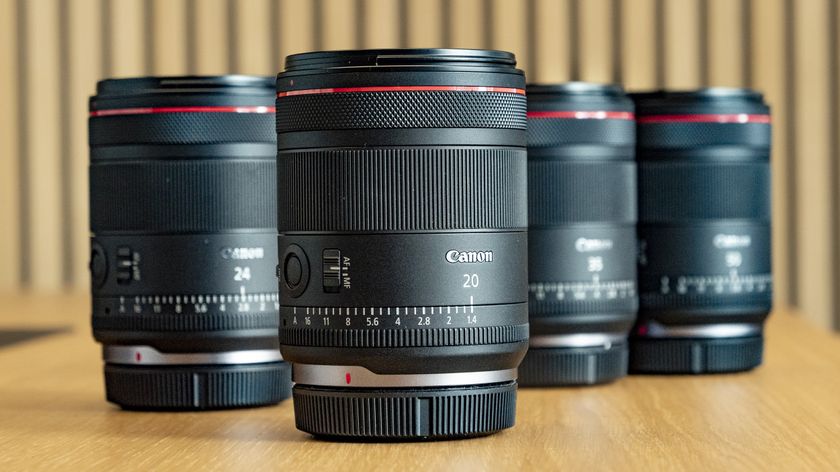Sony WF-1000XM4 vs Bose QuietComfort Earbuds: which noise-cancelling earbuds are right for you?
These fantastic wireless earbuds go head to head
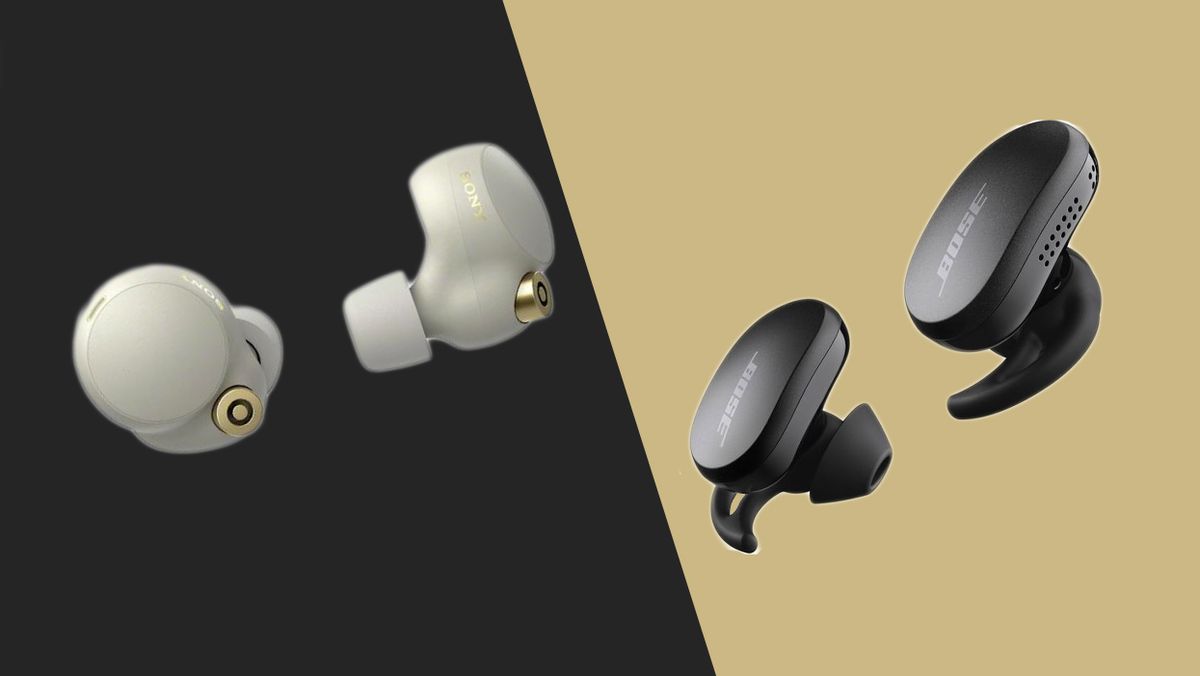
The Sony WF-1000XM4 are our pick for the best true wireless earbuds you can buy today – but are they the best noise-cancelling earbuds on the market?
They face some stiff competition, not least from noise-cancellation expert, Bose. The company has a great reputation for producing headphones that can block out the sound of your environment – and the Bose QuietComfort Earbuds are no exception.
If you value the ability to listen to your music in peace, you may be wondering whether you should buy the Sony WF-1000XM4, or opt for the Bose QuietComfort Earbuds. We’ve tested both models extensively to help you make the right choice.
Sony WF-1000XM4 vs Bose QuietComfort Earbuds: price and availability
The Sony WF-1000XM4 are available to buy now for $279.99 / £250 / AU$449. That makes them a little pricier than their predecessors, the Sony WF-1000XM3, which cost $230 / £220 / AU$399 at launch, but are now usually available at a discounted price.
The Bose QuietComfort Earbuds cost about the same in the US and the UK, coming in at $279 / £249. Since the Bose buds are a little older than the Sony WF-1000XM4, you’re more likely to find them at a discount – but don’t expect any huge reductions in price.
the Bose buds are a bit cheaper than the Sony earbuds in Australia, coming in at AU$399, but it's rather rare to find Sony audio kit at full price down under so the price between the two is certainly comparable.
Sony WF-1000XM4 vs Bose QuietComfort Earbuds: design
The Sony WF-1000XM4 and the Bose QuietComfort Earbuds sport very different designs. Sony’s earbuds are smaller than their predecessors, with rounded housings and a slim charging case, which you can top up using the USB-C port or via a wireless charging mat.
Get daily insight, inspiration and deals in your inbox
Sign up for breaking news, reviews, opinion, top tech deals, and more.
In the box, you get a selection of polyurethane eartips, which should see you able to achieve a comfortable fit and decent seal against your ear canal, helping with passive noise cancellation.
The surface of each earbud is touch-sensitive, allowing you to control music playback. You can also assign different controls via the Sony Headphones app, including ‘volume up/down’, ‘play/pause/skip forwards/skip backwards/summon voice assistant’, and ‘active noise-cancelling on/off/adaptive’.
The Bose QuietComfort Earbuds are bulkier than the Sony WF-1000XM4, with large, ovaloid housings and stabilizer fins that are designed to keep them securely in place. They come with a selection of cone-shaped eartips (with fins attached), which we found to be very comfortable in our tests.
Like the Sony WF-1000XM4, the outer housing of each earbud is touch-sensitive, enabling music control, noise cancellation and phone calls with a press of the finger. You can also touch-and-hold one earbud to perform a ‘shortcut’, assigning this action to skip your music forward, or to notify how much battery life is remaining.
Bose’s charging case is heavier than that of the Sony WF-1000XM4, but it also offers the ability to power up via USB-C or a wireless charging mat.
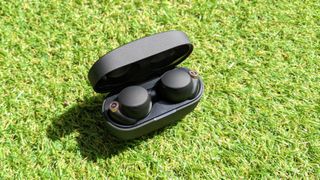
Sony WF-1000XM4 vs Bose QuietComfort Earbuds: audio performance
Both Sony and Bose have great reputations when it comes to creating high-quality, impressive-sounding headphones, and the WF-1000XM4 and QuietComfort Earbuds continue those legacies.
The Sony WF-1000XM4 just about beat the QuietComfort Earbuds for audio performance, thanks to richer bass frequencies and excellent levels of detail and rhythmic agility.
They also come with the DSEE Extreme audio upscaling technology that was introduced in the over-ear Sony WH-1000XM4 (AKA the best headphones you can buy in 2021). This technology is designed to extract high-resolution sound from standard-definition digital audio files – although we’ve never been entirely convinced about how successful this is. In any case, hi-res audio files are supported by the Sony buds, thanks to the company’s proprietary LDAC codec. There’s no support for aptX, however.
They may not be as bassy as the Sony WF-1000XM4, but the Bose QuietComfort Earbuds still boast a beautiful soundscape, and make for a very enjoyable listen.
Bose’s Active EQ tech also boosts bass or treble automatically, depending on volume levels. As such, music feels dynamic at any volume, with highs never sounding sharp or shrill, and lows thrumming pleasantly.
Unlike the Sony earbuds, there’s no way to fiddle with the EQ settings in the Bose Music app, but we wouldn’t say this omission is a deal-breaker. Both the Sony WF-1000XM4 and the Bose QuietComfort Earbuds support spatial audio in some form; the Sony can handle Dolby Atmos and Sony’s 360 Reality Audio, while the QuietComfort Earbuds support Spatial Audio content from Apple Music.
It’s also worth mentioning that the Bose QuietComfort Earbuds offer what we think is the best call quality of any true wireless earbuds we’ve tested. The WF-1000XM4 also provide clear calls, but they don’t quite beat Bose in this regard.
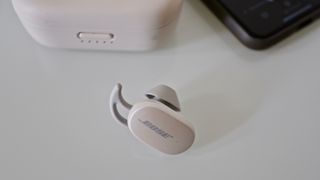
Sony WF-1000XM4 vs Bose QuietComfort Earbuds: noise cancellation
When it comes to noise cancellation, the Bose QuietComfort Earbuds are the winners. Just placing the earbuds in your ears achieves a high amount of passive noise cancellation, but bump up the ANC to level 10 and they’ll block out pretty much all but high-frequency sounds.
The hum of a ferry engine, revving motorcycle engines, screaming children – it was all drowned out when ANC was set at the maximum level during our testing. Even halfway through at level five, you’ll be hard-pressed to hear much of what’s happening around you.
However, if you do need to hear your surroundings, you’ll need to drop down to level zero, which is the transparency/ambient mode on the QC buds.
That’s not to say that the Sony WF-1000XM4 aren’t very good at blocking out external noise – they’re among the best noise-cancelling earbuds for a reason.
With your permission, the WF-1000XM4 can learn where you’re using geo-location access, and apply your preferred level of noise cancellation or ambient sound passthrough depending on where you are. So, for example, at home you may prefer a fully cancelled noise mode, while in the office you may still want to be able to hear voices.
While adaptive noise cancellation is a nifty feature, you don’t get the level of control seen with the Bose QuietComfort Earbuds and the ability to toggle through a range of ANC settings.
Like the Bose earbuds, the Sony WF-1000XM4 include a transparency mode, which Sony calls Ambient Sound Control.

Sony WF-1000XM4 vs Bose QuietComfort Earbuds: battery life and connectivity
Neither the Sony nor the Bose earbuds offer class-leading battery life, but the Sony WF-1000XM4 do offer a slightly longer playback time.
The Sony earbuds offer between 8 and 12 hours of playback (depending on whether active noise cancellation is on or off), plus another couple of charges via the case.
Meanwhile, the Bose QuietComfort Earbuds deliver six hours of playback from the buds themselves, with a further 12 hours from the charging case.
As for connectivity? The Sony WF-1000XM4 support Bluetooth 5.2, and LDAC, SBC and AAC codecs. Meanwhile, the Bose earbuds come with the ever-so-slightly older Bluetooth 5.1, although you probably won’t notice the difference between the two; neither model suffered from any annoying dropouts in tests.
Disappointingly, neither the Bose nor the Sony earbuds allow multipoint pairing like the Apple AirPods Pro. Not having to re-pair with different devices all the time is a handy feature that feels like a slight oversight on both these buds.

Takeaway
The Sony WF-1000XM4 may be the best wireless earbuds of 2021 overall, but the Bose QuietComfort Earbuds are undoubtedly the best noise-cancelling earbuds you can buy today. The ANC on offer is simply outstanding, and the ability to toggle through different levels is super-handy.
Nevertheless, the Sony WF-1000XM4 are very adept at blocking out external noise, too, plus they offer superior audio performance, as well as slightly longer battery life.
So, if noise cancellation is the most important feature for you, you’ll be better off with the Bose in-ear headphones. If you’re an audiophile for whom sound is the priority, try the Sony WF-1000XM4.
If we were choosing between the two earbuds in Australia, the slightly cheaper QuietComfort Earbuds may make the choice easier, but a discount from Sony may level that playing field. Unfortunately, the choice isn’t so easy in the US and the UK, where the Bose and Sony buds are evenly matched in terms of price.
If you remain unsure, our advice is to look at the designs of both models and consider which appeals most. If you like the security of stabilizer fins, go for the Bose QuietComfort Earbuds. Prefer a sleeker look and a lighter charging case? The Sony WF-1000XM4 might be your best bet.
- Read our full Sony WF-1000XM4 Wireless Earbuds review
- Or, check out our Bose QuietComfort Earbuds review
Olivia was previously TechRadar's Senior Editor - Home Entertainment, covering everything from headphones to TVs. Based in London, she's a popular music graduate who worked in the music industry before finding her calling in journalism. She's previously been interviewed on BBC Radio 5 Live on the subject of multi-room audio, chaired panel discussions on diversity in music festival lineups, and her bylines include T3, Stereoboard, What to Watch, Top Ten Reviews, Creative Bloq, and Croco Magazine. Olivia now has a career in PR.
